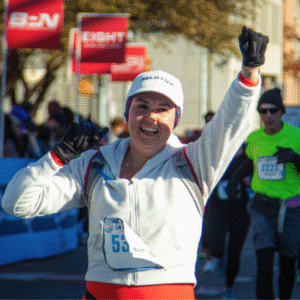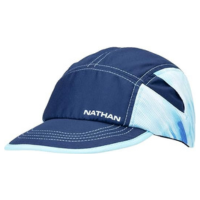Let’s set the record straight: you don’t need a lightning-fast pace or elite-level legs to run a half marathon. Seriously. Whether you’re a back-of-the-packer, a power walker, or somewhere in between—13.1 miles still counts the same for everyone.
Speed is optional. Courage? That’s the real requirement.
1. Running a Half Is About Grit, Not Pace
Half marathons aren’t just for the speedy folks chasing sub-90-minute finishes. They’re for anyone who’s got the heart to start, the will to keep moving, and the guts to finish what they began.
Whether it takes you 90 minutes or 3+ hours, you’re still covering 13.1 miles. And guess what? That medal at the end? It’s yours. And it spins.
2. The Finish Line Doesn’t Judge
You know who cheers the loudest? The finish line crew for the final runners. The ones who dug deep, didn’t quit, and proved to themselves they’re stronger than they thought.
Blaze says: “It’s not about how fast you get there—it’s about the fire that got you to show up.”
3. Walking? Totally Valid. Run/Walk? Genius.
You don’t have to run the whole thing. Many runners (yep, runners) use intervals—running for a bit, walking to recover, then repeating. It’s smart, sustainable, and super effective, especially on race day.
Pro tip: Practice your intervals during training so you find your rhythm before the big day.
4. Community Over Competition
The half marathon crowd? Pure gold. You’ll see folks of all ages, shapes, and paces cheering each other on. No one’s judging your time—they’re admiring your effort.
And the Austin International Half? It’s got that signature ATX energy: live music, epic crowd vibes, and a fast, friendly course made for every runner.
5. Progress > Perfection
Your pace doesn’t define your strength. Your willingness to train through heat, early mornings, and sore legs? That’s what makes you unstoppable.
Every mile you log, every time you lace up when you don’t feel like it—that’s you becoming the runner you were meant to be.
So, Why Run a Half Marathon If You’re Not Fast?
Because you can. Because it’s empowering. Because it changes how you see yourself.
Because speed doesn’t define runners—commitment does.
Whether you’re walking, jogging, or throwing in the occasional dance break (Blaze-style), the Austin International Half is your race too.
So show up. Be proud. Run your race—at your pace.
Registration for the 2026 Austin International Half is open!
Join a community that celebrates every runner.











